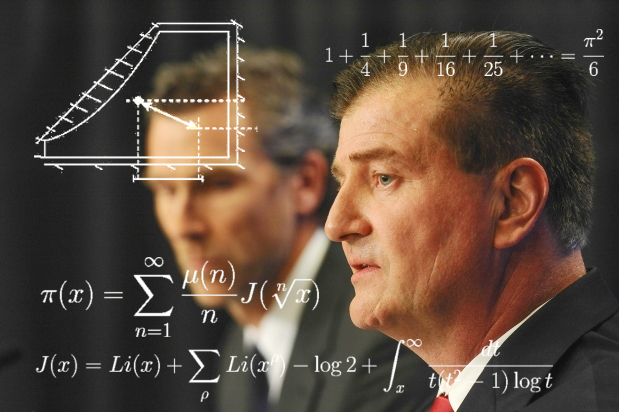The game is changing, and the NHL is compiling more and more advanced statistics. The most well-known one is still Corsi (shot attempts for versus shot attempts against), which correlates with puck control, but there are others too, such as PDO and Fenwick, and they all tell a larger story about a team’s success beyond who is scoring and who is not.
However, the picture is yet incomplete. I am shocked, nay, flabbergasted, that the NHL shows no interest in tracking other important metrics.
There are a handful of advanced stats that the Vancouver Canucks really ought to track, ones that would significantly enhance their understanding of this team. Here are a few I think they’d be smart to follow.
- Chirps For Percentage. Chirps For/(Chirps For + Chirps Against). Used to judge the efficacy of a team’s overall d-baggery. Abbreviates to CF%, but unfortunately that’s already taken by Corsi For Percentage, so we can instead shorthand it to the “Burr Measure”, named after the Canucks’ resident agitator, or perhaps the “Potatoes Quotient.”
- Bulie Wrath Consensus Index. This simple indicator is perhaps the most powerful of all. It measures the accuracy of virtually any high-level hockey management decision by testing it against the collective outrage of the sharpest and brightest hockey minds in the business: the PITB reader base. What's that? No, you're a shameless flatterer!
- Bulie Icetime Insight Index. Considered the counterpoint to the BWCI mentioned above, this one tracks the consensus on which player clearly needs to be played more often. Curiously, in almost all samples, the Bulie Icetime Insight Index corresponds with reduced minutes for said player, defying both reason and logic. Statistics are strange!
- Real Good Count. By affixing each member of the coaching staff with an in-game microphone, we can measure the number of times a coach utters the phrase, “real good.” No longer will journalists have to dissect perplexing and vague interview statements. Fans and writers alike will now know the exact level of gruff, grudging approval a coach gives to each player, in real time, simply by measuring the RGC for each player. Don’t worry, the mics will have anti-mustache-distortion filters, so even the most bristle-brushed bench bosses will be heard clear as day.
- Alex Edler Stick Breaks, or ESBs. This is one that keeps Vancouver stat trackers awfully busy, because ESBs happen a lot. And the rule is, while mapping each occurrence of an ESB, you must drink an ESB. It's a universal favourite of stat trackers. For unknown reasons, this statistic tends to become more unreliable throughout the course of a game.
- Megna Factor Ratio. To the uninitiated, something entitled “Megna Factor” may sound like one badass stat. Canucks fans know that it’s not. Instead, this measures the playing time of coach’s favourite pet project versus the playing time of someone who actually makes sense in that role. (If you’re unsure of which player is the pet project, and which player actually makes sense, you can simply cross reference the Bulie Wrath Consensus Index with the Bulie Icetime Insight Index for clarity.) Despite the Vancouver-specific name, this is a ratio that all NHL fans could benefit from.
- Henrik. While its name is technically the One Pass Too Many Metric, it’s known colloquially as the Henrik, after the Sedin twin renowned for making that completely superfluous extra passing play. A high Henrik/60 is correlated with an increase in the following statistic...
- SHOOOOOOOT. Aka. Shouts Haranguing On-Ice Obstinance in O-Zone Opposed to Opportunities tO put pucks On neT. This measures the number of times people in the crowd yell, “Shoooooooooot!” at the players on the ice. This is a controversial statistic, not only because of its unwieldy acronym, but also because its critics question how accurate it is at actually measuring the total number of opportunities to shoot that are passed up per game. Some suggest that SHOOOOOOOT/60 is only useful in power play situations.
- FVP. This statistic tracks the oft touted but seldom used “flying vee” maneuver. Flying Vee Percentage tracks the precise number of times this maneuver is used in a game (typically zero), against the number of times it should be utilized (one hundred percent of the time.) High FVP is a good gauge of four-goal comeback odds. A pertinent ancillary metric to consider alongside it is Crowd Quack Volume, which correlates to increased instance of FVP.
Thanks to Daniel Wagner for his insight in putting together this list. If Vancouver can institute these metrics into their analysis, I’m certain they’ll see improvements. That being said, there are many alternative measures I’ve left out. What other advanced statistics could be added?



